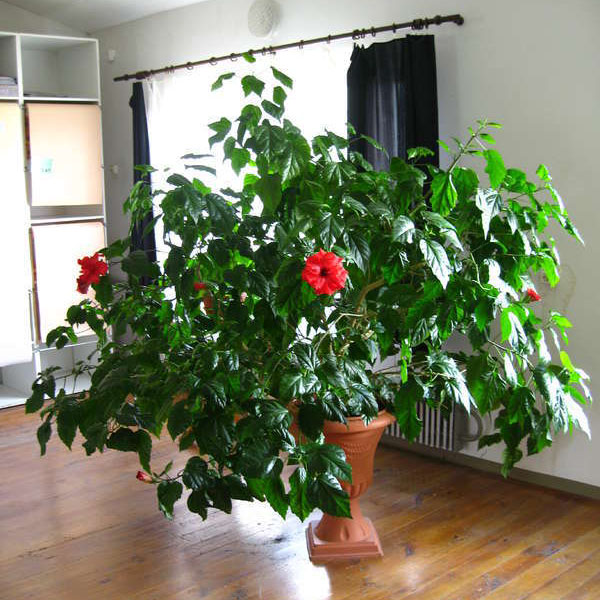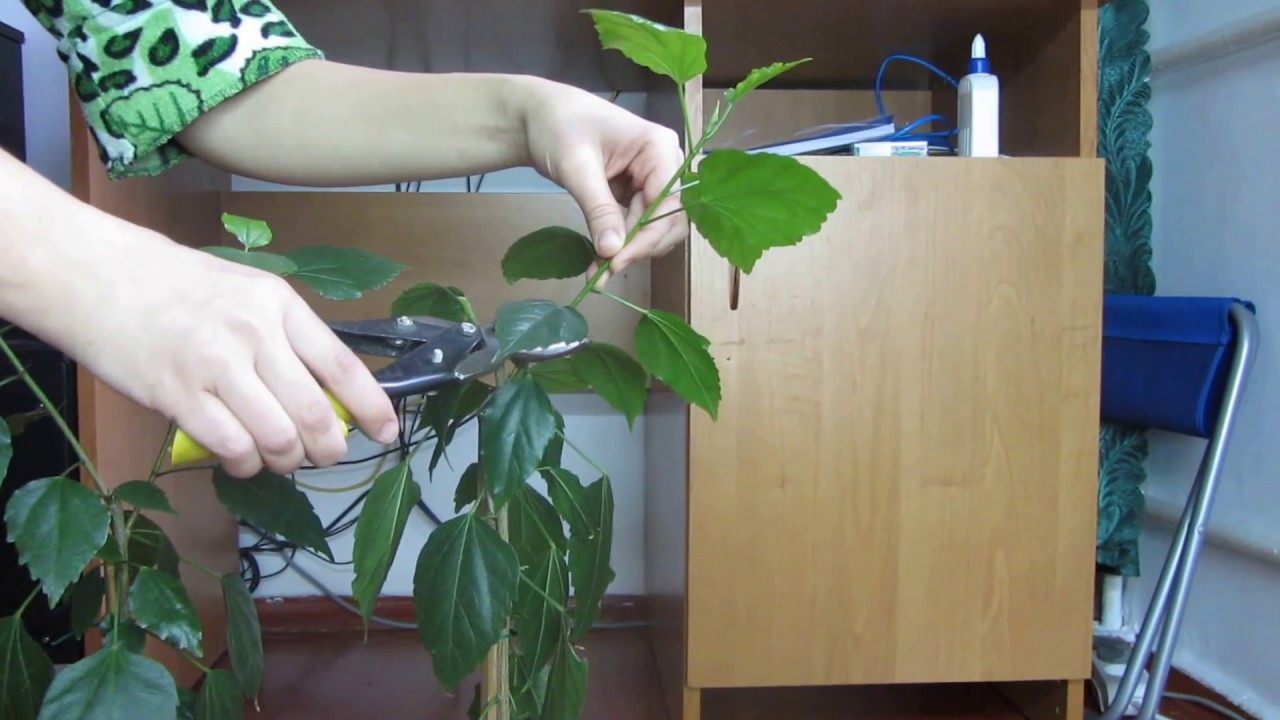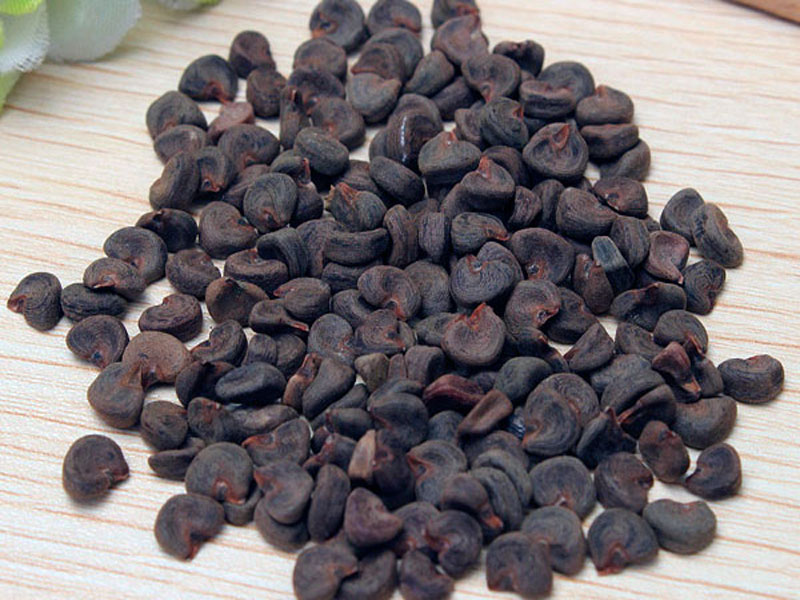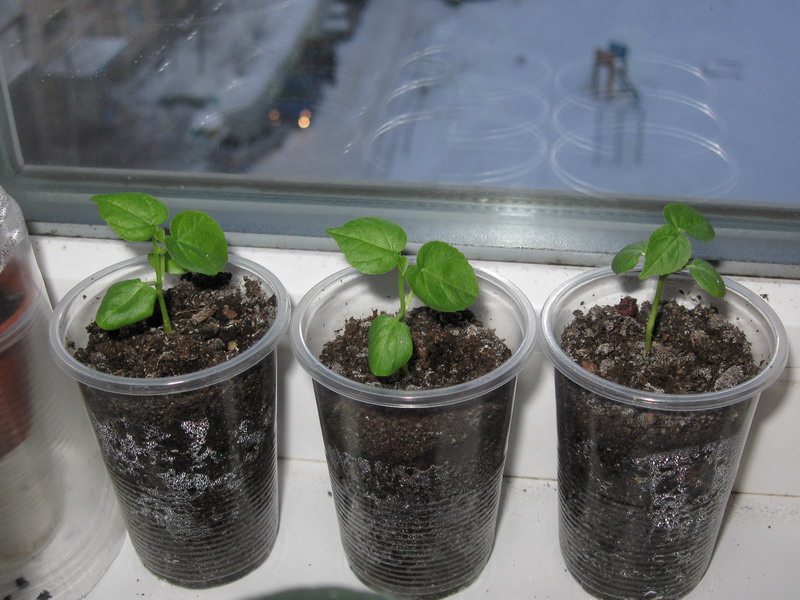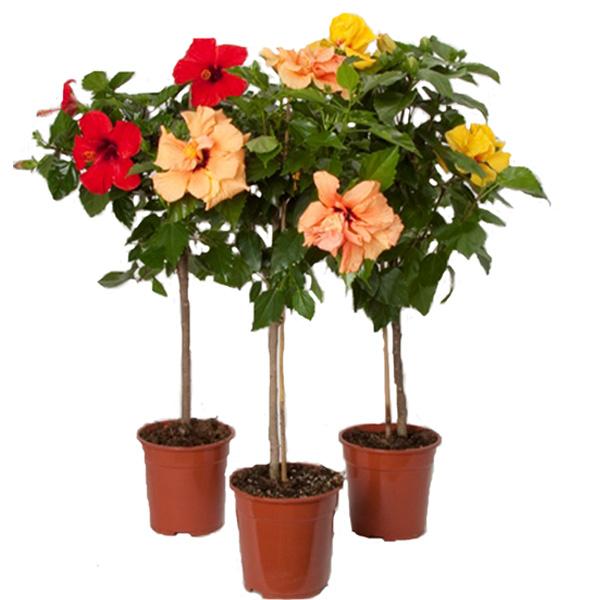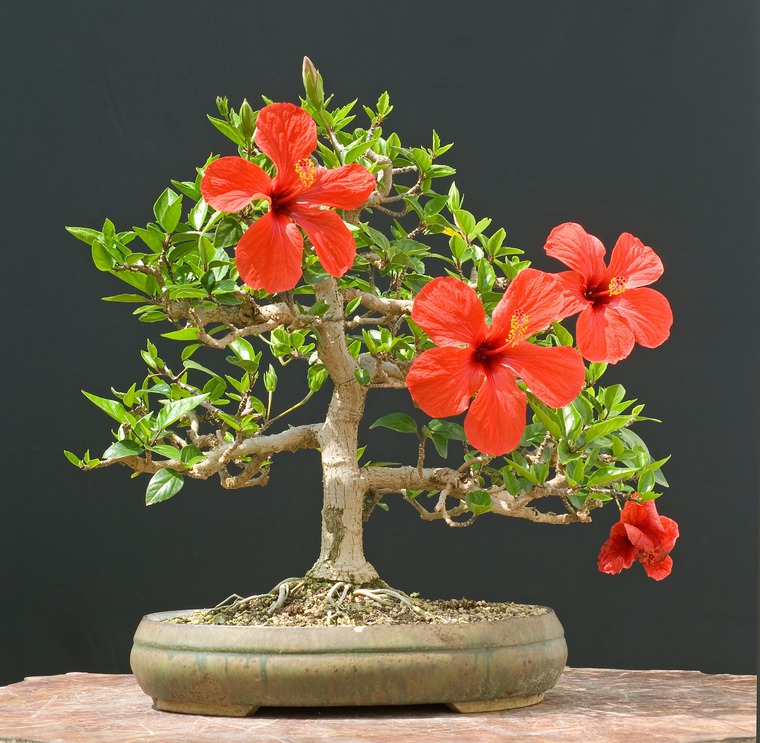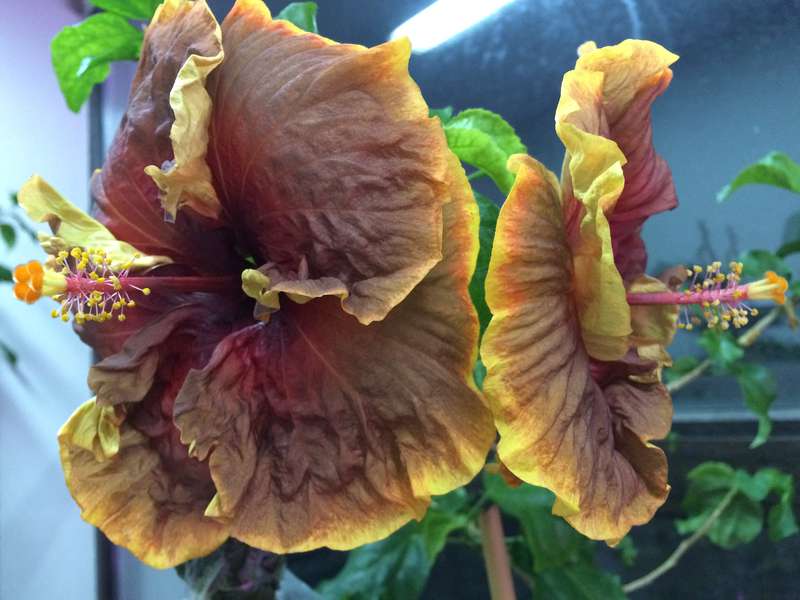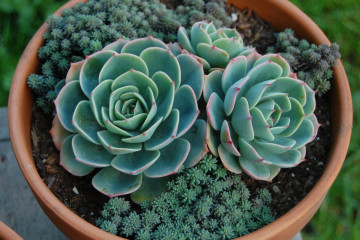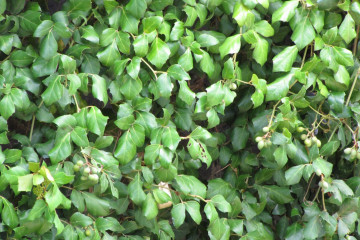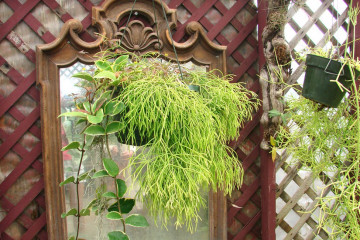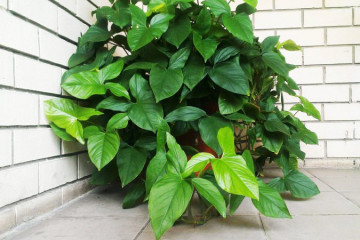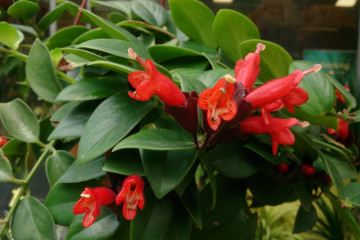Chinese rose - home care and reproduction
Content:
For the decoration of apartments, residential buildings, office premises, as well as in landscape design, the hibiscus plant, or Chinese rose, or Chinese rose is often used. It is hard not to notice this gorgeous shrub with huge beautiful flowers.
The plant belongs to the Malvov family. Rosewood can grow as a tree-like shrub, tree, or herbaceous plant.
The habitat is the south of China and India, but the shrub has taken root well in tropical and subtropical countries. In Korea, its flower is recognized as national, and its image is minted on the coins of Malaysia.
The name of the tree has two parts. The first part characterizes a flower that looks like a large rose, the second - the country of growth.
The leaves of the Chinese rose are carved, glossy, leathery, dark green in color. The flower is large, grows up to 16 cm in diameter. Many varieties of Chinese hibiscus have been bred with colors of red, white, yellow, orange and pink colors. In appearance, they are divided into ordinary and terry.
The Chinese rose tree lives for about 30 years. In its natural habitat, it can reach a height of 3 m.
Hibiscus adapts to growing both indoors and outdoors. Young shoots of hibiscus are used for cooking, and tea is brewed from its buds. Rosean is also grown for medicinal purposes.
Reproduction of the Chinese rose
How to propagate hibiscus at home? The Chinese rose tree can be propagated in two ways: by cuttings and growing from seeds.
The most preferred method for propagating hibiscus is by cuttings. It is the simplest and least labor-intensive, while the seedling always inherits all the characteristics of the parent plant.
Cuttings
As a planting material, use the branches of a rose tree, which remain after pruning the bush, or a specially cut cutting with the tip of the shoot. The prepared branches should have two or more internodes.
Two methods are used for rooting:
- Place the cut parts of the shoots in a jar of water. After the roots appear, the seedlings need to be transplanted into a pot with prepared soil.
- You can root the cutting directly in the ground. The soil should be loose and light. You can use sand. The cuttings are stuck into the soil. To maintain optimal rooting conditions for the cuttings, cover the planting on top with a plastic bag or glass jar to create a mini-greenhouse. Periodically, the jar is removed and the plantings are aired. This will remove condensation and prevent fungal diseases of the seedlings.
The room must maintain a temperature regime within + 22-25 ° С.
Within 1-2 months after planting, the roots grow from the cuttings, they can be transplanted to a permanent place.
Growing from seeds
The tree can propagate by seeds. With this breeding option, the shrub will bloom no earlier than three years later.
How to grow Chinese hibiscus from seeds at home? This option is more time consuming than cuttings. The seeds can be obtained by yourself or purchased from the store.
The order of growing hibiscus is as follows:
- The seeds are pre-soaked in warm water for several hours. For planting, those that are at the bottom of the container are used. Empty, floating seeds are not suitable for planting. It is advisable to add a growth stimulator to a container with water. It is also recommended after that to disinfect them in a weak solution of potassium permanganate.
- Place the seeds on a damp germination rag. Cover them with a damp cloth as well. When germinating, the rags must be constantly moistened so that they do not dry out.
- After the sprouts appear, the seeds must be carefully planted in a prepared glass with soil. As a substrate, peat and sand can be mixed in equal proportions. Planting is carried out either in a pre-moistened soil, or after planting, the earth is moistened from a spray bottle.
- Plantings need to be covered with glass or polyethylene to get an impromptu mini-greenhouse.
- Daily care consists in airing the greenhouse, spraying the substrate with water and maintaining the temperature at least 25 ° C.
- After the seedlings have a third leaf, they need to be picked and planted in separate small containers.
In their first flower pots, young Chinese roses will grow until they are transplanted into large containers.
Care of seedlings and seedlings
When the seedlings and seedlings are planted in individual containers, they need to be looked after in the same way as for adult plants.
With proper care, the growth rate of young plants is quite high. To form a beautiful lush crown, the tops of the shoots are periodically pinched.
For young seedlings, annual transplants are required. For this, a pot is selected, slightly larger than the previous one in diameter. At the bottom, a drainage layer is necessarily organized, consisting of small pieces of brick or expanded clay.
It is better to transplant the plant by the transshipment method. With this variant of the transplant, the risk of injury to the roots of the hibiscus is practically excluded.
Empty places in the pot are covered with prepared earth. For the plant, you can use the soil substrate in which citrus fruits are grown. A little sand is added to it before planting. You can cook the earth yourself. To do this, mix sod and leafy soil in equal parts and add 1/3 of humus, sand and charcoal each.
Indoor hibiscus formation
The Chinese rose must be pruned. Pruning is necessary for the formation of a beautiful crown of the plant, its thinning and stimulation of the tree's flowering.
Before you start forming a plant, you need to decide on the type of future hibiscus. It is usually grown as a standard tree or as a bush.
When should you start shaping your hibiscus from scratch? In young Chinese rose trees, the formation begins when the seedling has reached a height of 13-15 cm.
If a plant is formed in the form of a standard tree, then the central shoot is pinched. This stimulates the growth of the lateral processes. Since a young plant has a thin trunk, it is best to tie the trunk to some kind of support, for example, a wooden stick, when forming a tree.
If a bush is formed, then several buds located below are left on the central trunk, the rest of it is cut off. Branches of the future shrub will grow from them. After about 3 months, the grown shoots are also cut off.
When forming a rose tree, dry and damaged shoots are cut out, as well as branches that grow inside the crown or parallel to the main one.
The cut is made at an angle of 45 ° with ordinary scissors. When choosing a place for cutting, attention is paid to the position of the bud or leaf over which the cut is made. They should be located on the outside of the branch. In this case, the growth of the shoot will be directed from the crown.
It is advisable to prune the flower in February and autumn. In summer, pruning is not recommended, as this can delay the flowering of the bush.
With the correct pruning, bonsai trees can be grown.
Taking care of an adult tree
For a Chinese rose tree, home care is simple. It includes timely watering, pruning, feeding and creating conditions for wintering.
Watering mode
From February to October, the plant is watered abundantly. Watering is performed when the topsoil is dry. They take warm and settled water. After watering, the excess water that was in the pan is drained.
For a plant during the growing season, air humidity should be maintained at 70%. Therefore, if the summer is hot, then foliar watering or spraying is carried out.
Top dressing
During the growing season, for the normal development of the plant, the shrub needs to be fertilized. It is best to purchase ready-made mineral formulations designed for flowering plants. When choosing a fertilizer, preference is given to those that contain a small percentage of phosphorus in their composition.
Mineral fertilizers must be alternated with organic matter. An infusion of chicken manure (concentration 1:20) or cow dung (concentration 1:12) is used as organic fertilizers.
Plants must be fertilized on damp ground. If the soil is dry, you can burn the leaves.
Usually the shrub is fertilized once every 2-3 weeks.
During flowering
Hibiscus blooms for 3 seasons - it starts in the spring and ends in the fall. Some specimens can throw out buds even in winter.
A blossoming flower stays on the branch for no more than 1-2 days, then falls, but a new bud opens up to replace it.
To obtain sufficient light, hibiscus is placed near windows oriented southeast or southwest. When installed on a southern windowsill, the flower is protected from direct sunlight.
During this period, the temperature is maintained at + 18-20 ° C.
From spring to autumn, the plant can be placed in the garden or on the balcony. The main requirement when choosing a place is diffused light, protection from wind and drafts.
During the rest period
In winter, the plant should rest. To do this, the room temperature is reduced, the frequency and volume of watering are reduced. To determine the need for watering, the soil in the pot is loosened with a stick to a depth of several centimeters. If it is dry, then watering is carried out, if only a thin top layer is dry, then watering is not performed.
Daylight hours are maintained for 6-8 hours. With a lack of natural light, artificial lighting is additionally organized. You can use a phytolamp specially for these purposes.
The optimum temperature for wintering a plant is + 15-18 ° C.
Also at this time, the flower does not need frequent feeding. Fertilize the bush no more than 1 time per month with phosphorus-potassium compounds, or do not apply fertilizing at all.
If the air in the room is very dry, then sprinkle the Chinese rose with warm soft water.
Preparing for winter
In the autumn, foliage may fall off the hibiscus. In this case, the bare stems are cut off. Shoots are cut and leave small shoots (a few centimeters).
Also, gradually reduce watering so that in winter the reduction in the amount of water is not sharp.
By autumn, nitrogen-containing additives are excluded so as not to provoke active growth of shoots. At this time, it is recommended to feed the Chinese rose with a potassium-phosphorus composition. Fertilize no more than 1 time per month.
Why the Chinese rose does not bloom
Florists often wonder what to do when hibiscus is not blooming. At the same time, many argue that they are performing the correct care of the plant, including watering, feeding, and temperature conditions.
One of the reasons why hibiscus does not bloom is that the tree does not have enough light. The Chinese rose only blooms when it receives sufficient light. In this case, you need to take the flower pot out to the balcony or garden. You can try to move it to the southern windowsill.
Also, another answer to the question of why the Chinese rose does not bloom is untimely pruning. The fact is that flowering shoots can only be young. It is on them that the buds are laid. Therefore, in order to force the hibiscus to form new buds, it is necessary to remove the dried flower along with part of the shoot after flowering.
Another reason is to transplant the tree into a very large pot. Flowering plants form buds only when their root system fills the entire volume of the pot.
The bush can throw out buds, but they do not open and soon dry up and fall off. This could be due to a lack of moisture, nutrients, or low temperatures. Also, due to a lack of moisture and nutrients, the leaves will turn yellow.
If there are flowers, but in small quantities, and the bush mainly grows green mass, it means that the plant receives nitrogen fertilizers in excess. It may also be due to insufficient lighting.
The Chinese rose is a plant that will organically fit into the interior of any home or decorate a garden plot.
